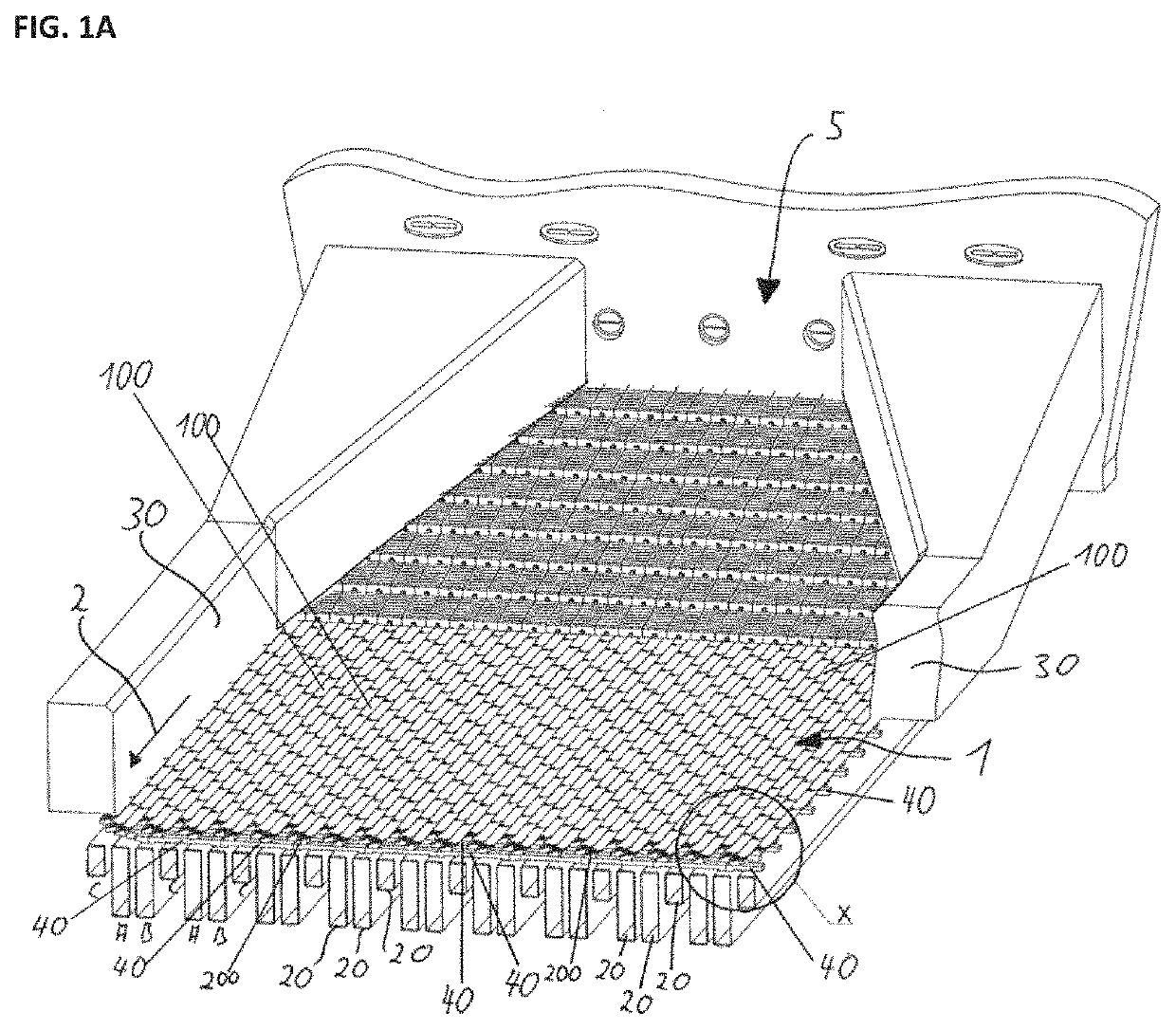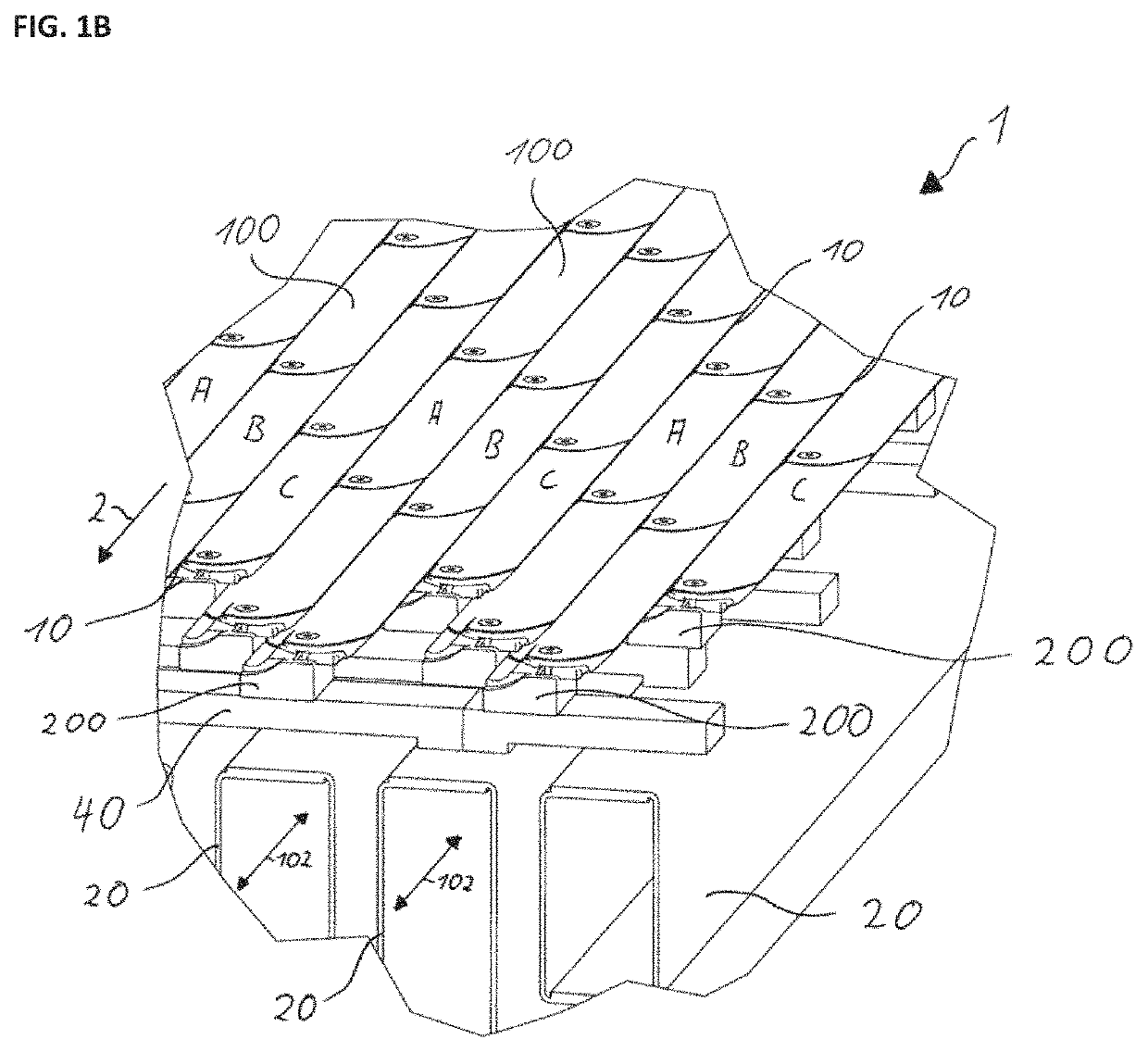Cement clinker cooler with reciprocating planks
a cement clinker cooler and reciprocating technology, applied in the field of grate bars, can solve the problems of unaddressed mounting of grate bars constituting grate bars, inability to identify defective grate bars from below, and inability to ensure safe access and identification, so as to increase the number of planks, maintain the width of the grate floor constant, and enhance the number of longitudinal beams
- Summary
- Abstract
- Description
- Claims
- Application Information
AI Technical Summary
Benefits of technology
Problems solved by technology
Method used
Image
Examples
Embodiment Construction
[0055]In FIGS. 1a and 1b a grate floor 1 is sketched. The grate floor 1 may be configured for and used for, e.g. cooling and conveying clinker. The conveying direction is symbolized by an arrow 2. The grate floor 1 has planks assembled of grate bars 100 which are mounted in columns one after the other. The front-end sides 110 of the grate bars 100 abut the rear-end sides 120 of subsequent grate bars 100 (cf. FIG. 3B), except the front-end sides 110 of the grate bars 100 that form the very front end of the grate floor 1 (not shown). The grate bars 100 and thus the planks have a longitudinal direction (defined to be parallel to the conveying direction and the arrow 2).
[0056]As shown in a cross-sectional view of FIG. 2, between the planks there are moving gaps 10 that are configured to enable a reciprocating movement of the grate bars 100 of a given plank relative to the grate bars 100 of neighbouring planks along the longitudinal direction 2 of the grate floor, as indicated by double ...
PUM
 Login to View More
Login to View More Abstract
Description
Claims
Application Information
 Login to View More
Login to View More - R&D
- Intellectual Property
- Life Sciences
- Materials
- Tech Scout
- Unparalleled Data Quality
- Higher Quality Content
- 60% Fewer Hallucinations
Browse by: Latest US Patents, China's latest patents, Technical Efficacy Thesaurus, Application Domain, Technology Topic, Popular Technical Reports.
© 2025 PatSnap. All rights reserved.Legal|Privacy policy|Modern Slavery Act Transparency Statement|Sitemap|About US| Contact US: help@patsnap.com



